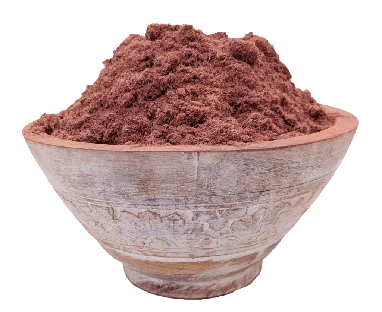Channel your inner Vogue and Confidence!

In the realm of ethnobotany and traditional medicine, few plants have garnered as much attention as Mimosa tenuiflora root bark. Native to Central and South America, this remarkable plant has been utilized for centuries by indigenous cultures for its regenerative and therapeutic properties. Also known by its synonym Mimosa hostilis, this plant is especially valued for the rich phytochemical profile found in its root bark, which holds a variety of medicinal, cosmetic, and even spiritual applications.
This article explores the origins, chemical composition, traditional uses and modern applications of Mimosa tenuiflora root bark, offering a deep dive into what makes this botanical so special.
Mimosa tenuiflora, formerly known as Mimosa hostilis, is a perennial shrub or small tree in the Fabaceae (legume) family. It thrives in the arid and semi-arid regions of Mexico, Brazil, Venezuela, and other parts of Latin America. In Mexico, it is commonly known as Tepezcohuite.
This resilient plant is known for its ability to thrive in poor soils and recover quickly from environmental stress which makes it a symbol of regeneration in many traditional contexts.
The root bark of Mimosa tenuiflora is particularly renowned for its high concentration of alkaloids, especially N,N-Dimethyltryptamine (DMT)—a potent psychedelic compound that plays a key role in many shamanic rituals across South America.
Besides DMT, the bark contains:
These compounds contribute to its antibacterial, antifungal, anti-inflammatory, and skin-repairing properties.
Apart from active alkaloids, the root bark is rich in:
These minerals are very important for skin health, tissue regeneration and immune response, making Mimosa tenuiflora root bark highly valuable in natural medicine and cosmetics.
Indigenous tribes in Brazil and Mexico have long used Mimosa hostilis root bark in their healing ceremonies. In Brazil, particularly among the Pankararu and the Tukano people, the root bark is used to prepare Jurema Wine—a psychoactive brew used in rituals to connect with the spiritual realm.
In Mexico, Tepezcohuite powder is a traditional remedy for burns, wounds, and skin infections. It gained national attention in the 1980s when Mexican Red Cross used it extensively to treat burn victims following a series of gas explosions in Guadalajara. The results were remarkable, with rapid healing and minimal scarring.
The root bark’s high tannin and flavonoid content make it a sought-after ingredient in:
Its regenerative and anti-inflammatory properties help reduce wrinkles, heal acne, and improve skin tone.
Today, Mimosa tenuiflora root bark is used in:
Many naturopaths consider it a “natural antibiotic” due to its strong antimicrobial profile.
The presence of N,N-Dimethyltryptamine (DMT) in Mimosa hostilis root bark makes it a powerful entheogen. When combined with an MAOI (monoamine oxidase inhibitor), the DMT becomes orally active, resulting in intense psychedelic experiences often associated with ego dissolution, spiritual insight and psychological healing.
This use, while controversial in Western societies, is deeply respected in shamanic traditions, where it is considered a sacred plant that allows the user to communicate with the divine or spirit world.
Note: The use of DMT is regulated or prohibited in many countries. Always check local laws before acquiring or using Mimosa hostilis root bark for entheogenic purposes.
Mimosa tenuiflora is not just medicinal—it is also ecologically valuable. As a nitrogen-fixing plant, it helps improve poor soils by converting atmospheric nitrogen into nutrients that other plants can use. It’s used in reforestation projects and as a protective cover to prevent erosion.
Due to increasing demand, concerns about overharvesting have emerged. Fortunately, the plant regenerates quickly especially when root bark is harvested ethically by cutting small sections rather than uprooting the entire plant. Sustainable cultivation and ethical sourcing are crucial to preserving this valuable species.
The root bark is available in several forms:
Each form has its own applications depending on the intended use—cosmetic, medicinal, or entheogenic.
While Mimosa tenuiflora root bark is generally safe for topical use, internal consumption can be risky due to its potent alkaloids.
Possible side effects:
Pregnant or breastfeeding women, people with psychiatric disorders, or those on medication should avoid internal use unless under the guidance of a qualified healthcare provider.
The legality of Mimosa hostilis varies widely:
As such, it’s important to stay informed about regional laws when considering use or purchase.
Mimosa tenuiflora root bark is a plant of profound significance, weaving together ancient traditions and modern applications in medicine, skincare and spirituality. Whether you’re interested in its rich ethnobotanical history, its role in natural healing or its chemical uniqueness, this remarkable plant continues to inspire curiosity and respect around the globe.
Despite modern commercialization, it’s very important to approach this plant with an awareness of sustainability and legality. As science continues to explore the plant’s vast potential, Mimosa hostilis remains a shining example of nature’s ability to heal, protect and connect us to something greater.

Good taste never goes out of style! Mehreen Hassan at Vogue Vocal is as vocal about all time tried and tested beauty secrets as it can get! The real deal behind a well put together look is the confidence that glows and shines from within! Mehreen is your beauty guru with the nature’s secrets, DIY skincare, and all the trending Beauty products! Let’s learn the dos and don’ts of a skincare routine and let your beautiful personality shine through!